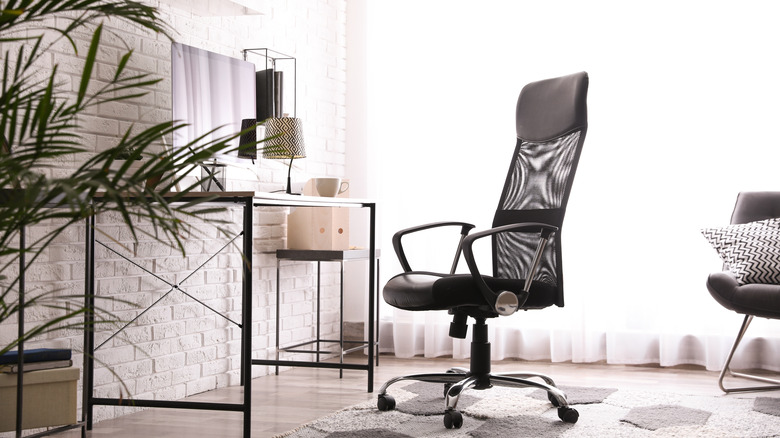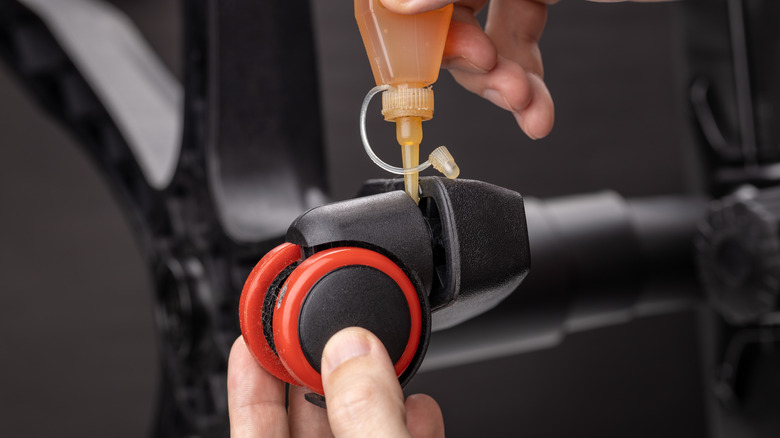The WD-40 Hack That'll Solve Your Squeaky Office Chair Problem In Seconds
Your desk chair does a lot of work to keep you off the floor, on task, and comfortable. Aside from the occasional wobble, most chairs don't require a lot of maintenance. A solid, ergonomic home office chair can boost your work performance and comfort while rolling you around in every direction. It moves up and down on a whim, tilts, locks, and adjusts in countless ways, and it almost never complains. Almost. Eventually, most chairs will emit an involuntary squeak or groan to let you know it needs a little lubrication for all those moving parts. And when a chair's dreams turn to lubrication, what it's usually dreaming about is WD-40.
All of the joints, fittings, levers, bearings, swivels, and wheels bear your weight. Those occasional squeaks of complaint arise when the parts just don't move as well as they used to. You notice the friction when your chair doesn't change direction quite as easily, raise or lower smoothly, or lock into position as readily as it once did. But mostly, you'll notice the squeaks. Fortunately, WD-40's lubricating powers can usually ease friction with just a carefully placed spray. You don't need to fully understand all the workings of an office chair to lubricate it properly, but it does help to have some idea of what's moving around down there.
Lubricate all the moving parts
Grab your can of WD-40, preferably with the flexible straw attached, and take a seat on the floor to take inventory of the moving parts. Roughly from top to bottom, these are some of the possible things you'll want to lubricate (note that you probably won't have all of them). Extend the adjustable headrest and armrests and spray where the parts contact each other. Spray any point where the chair back adjusts or moves. Skip the adjustment levers and knobs just below the seat unless you suspect one of them of making noise, since lubricating them might interfere with their function. The seat will probably connect to a post or pneumatic cylinder that moves up and down, so make sure that mechanism is lubricated, too.
At the bottom, that post probably swivels, so spray some WD-40 in there as well. The base might have five or so wheels or casters; you'll want to lubricate the joint where these swivel and the little axle that the wheel rotates around. Take care not to get WD-40 on the wheel itself, which would make for a slippery seating experience.
Let the WD-40 sit in the chair's joints and spread for a while, then work in the lubricant by moving everything a bit. Clean up any excess or drips to keep it off of you, your clothes, and your floor — unless you need to remove floor scuffs, which WD-40 is great at. Now, enjoy the silence.

